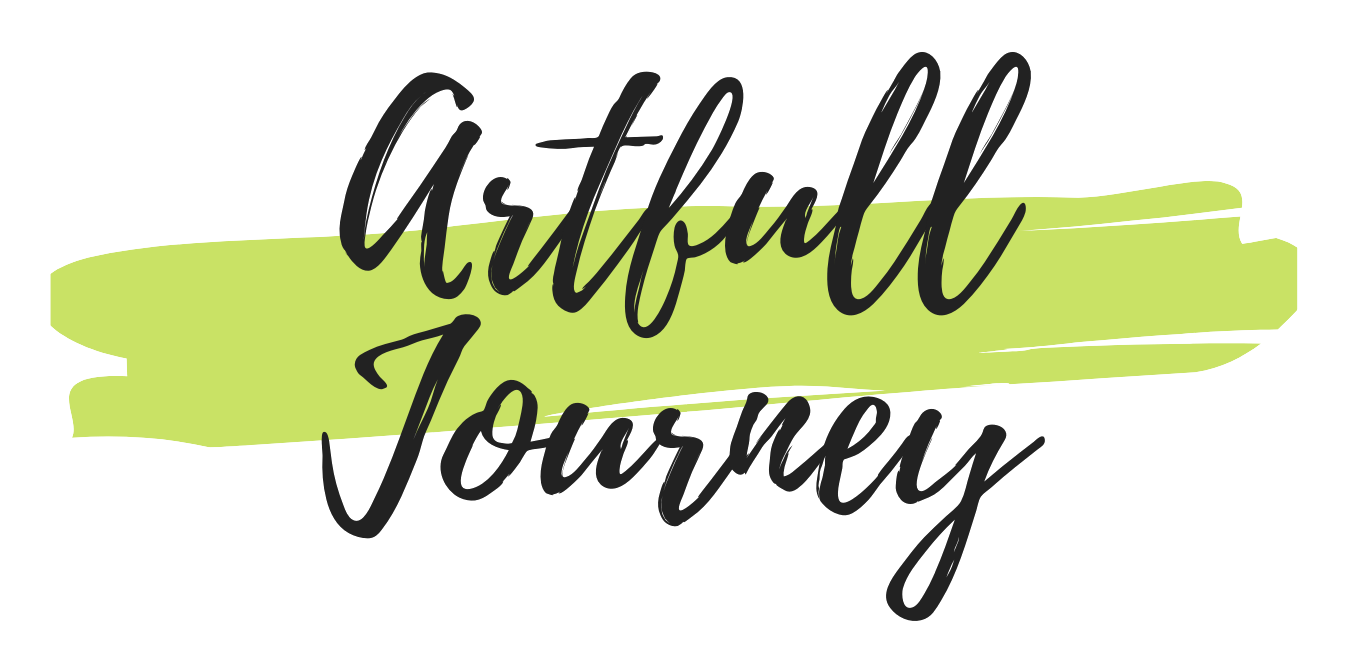Are you looking to elevate your skills through creative practice? Whether you’re a student, professional, or enthusiast, finding the right creative practice guide can unlock new levels of creativity and proficiency. A well-crafted creative practice guide offers a wealth of strategies, tools, and techniques designed to help you refine your skills and achieve your goals. From mastering creative writing to developing effective study habits, these guides provide comprehensive insights that cater to diverse learning styles and objectives. By exploring creative study guide ideas and leveraging creative practice examples, you can uncover proven methods to enhance your abilities and stay ahead in your field. This guide dives deep into effective creative practice strategies, offering practical tips and real-world applications to help you succeed. Let’s embark on a journey to discover the power of creative practice and how it can transform your approach to learning and growth.
Key Takeaways
– Define clear, achievable goals to guide your creative journey and stay aligned with your aspirations.
– Develop a consistent routine by creating a dedicated workspace and allocating specific times for creative activities.
– Explore diverse art forms to broaden your perspective and spark innovation through experimentation.
– Seek inspiration from nature, architecture, and everyday life, and follow artists who resonate with your style.
– Practice mindfulness to kickstart your creative session and reflect on your work for growth and improvement.
– Collaborate with fellow creatives to push boundaries and gain fresh insights through shared projects.
– Embrace experimentation by viewing failures as stepping stones toward discovery and breaking creative blocks.
– Document your work in portfolios or scrapbooks to track progress and share your journey with others.
– Learn from masterpieces by analyzing iconic works and refining your style through workshops or tutorials.
– Stay curious and open-minded to explore uncharted territories and keep your work fresh and exciting.
– Curate resources and engage with communities to access tools, materials, and support for your creative growth.
– Foster community connections through group critiques, collaborative projects, and online platforms.
– Incorporate feedback and reflection to improve your work and stay motivated.
– Leverage technology by using apps and software to enhance creativity and streamline your workflow.
– Track progress through goal-setting, journaling, and participation in creative challenges.

How Can a Creative Practice Guide Help Improve Your Skills?
We believe that a well-structured creative practice guide can significantly enhance your artistic abilities and overall creativity. Here’s how:
1. Explore New Techniques and Styles
Engaging in regular creative practice allows you to experiment with diverse techniques and styles. By dedicating time to explore different mediums and approaches, you can discover what resonates most with your unique perspective. This experimentation fosters innovation and keeps your work fresh and dynamic.
2. Develop a Personal Style
A creative practice guide helps you identify and refine your personal artistic style. Through consistent practice, you’ll begin to recognize patterns in your work, allowing you to make deliberate choices that shape your unique voice. This process strengthens your identity as an artist and makes your creations more recognizable and meaningful.
3. Stay Inspired and Motivated
Staying inspired is crucial for sustained growth, and a creative practice guide provides a roadmap to keep you on track. By setting achievable goals and tracking your progress, you can maintain momentum and overcome creative plateaus. This sense of accomplishment fuels continued motivation and drives your artistic evolution.
4. Receive Constructive Feedback
Incorporating feedback from peers or mentors is essential for refining your skills. A creative practice guide often includes opportunities to share your work with others or participate in workshops. This interaction with different perspectives helps you see your work in new ways, leading to improvements and deeper understanding of your craft.
5. Build a Strong Portfolio
Documenting your creative journey is key to showcasing your growth. A creative practice guide encourages you to document your work, which serves as a visual record of your progress. This portfolio becomes a valuable asset, whether you’re seeking opportunities, collaborating with others, or simply reflecting on your achievements.
By utilizing a creative practice guide, you invest in your artistic development. Regular practice not only sharpens your technical skills but also deepens your intuition and creativity. Embrace the journey, and let your passion guide you to new heights in your artistic endeavors. Visit our homepage for more resources and inspiration!
Effective Creative Practice Strategies
Creating a structured and effective creative practice routine can significantly enhance your artistic journey. Here are some proven strategies to help you stay inspired and productive:
- Set Clear Goals – Define what you aim to achieve with your creative practice. Whether it’s mastering a new technique or exploring a particular theme, having objectives will keep you focused.
- Establish a Daily Routine – Consistency is key. Dedicate a specific time each day for your creative activities. This habit helps build momentum and ensures regular progress.
- Create a Dedicated Workspace – Find a quiet, organized space where you can concentrate. This environment reduces distractions and fosters a mindset conducive to creativity.
- Experiment Regularly – Don’t shy away from trying new tools, mediums, or approaches. Experimentation often leads to unexpected discoveries and innovative outcomes.
- Seek Feedback – Share your work with trusted peers or mentors who can offer constructive criticism. This can provide valuable insights and help you grow as an artist.
- Practice Mindfulness – Before diving into your creative project, take a few moments to meditate or clear your mind. This can help you approach your work with fresh perspectives and reduce stress.
- Track Progress – Keep a journal or portfolio to document your creative journey. Reviewing your work over time allows you to see improvements and stay motivated.
- Stay Curious – Explore different art forms, movements, and cultural influences. Broadening your horizons can spark new ideas and inspire creative breakthroughs.
- Celebrate Small Wins – Acknowledge and celebrate every achievement, no matter how minor. This positive reinforcement can boost your confidence and drive.
By incorporating these strategies into your creative practice, you can develop a sustainable and fulfilling routine that supports your growth as an artist. Remember, creativity is a journey, and every step forward is worth celebrating.

Effective Creative Practice Strategies
Creating a structured and effective creative practice requires a combination of mindset, technique, and consistent application. Below are key strategies from a comprehensive creative practice guide:
1. Brainstorming Techniques
Start with loose, unstructured brainstorming sessions to allow your mind to wander freely. Use tools like mind maps or scrapbooks to visualize ideas. Transition to organized brainstorming by setting a timer and focusing on generating a set number of ideas in a short timeframe.
2. Refining Ideas
Once you have initial ideas, refine them by questioning assumptions and exploring alternatives. Consider different perspectives or styles to breathe life into your concepts. Share your ideas with peers or mentors for constructive feedback and refinement.
3. Applying Creative Concepts
Apply theoretical concepts to real-world projects by experimenting with different mediums and techniques. Engage in hands-on exercises to test your understanding and see how ideas translate into tangible outcomes.
4. Staying Inspired
Maintain motivation by setting personal goals and tracking progress. Explore diverse art forms and study historical movements to find inspiration. Use social media and art communities to discover new trends and gain perspective.
5. Leveraging Technology
Embrace digital tools and platforms to enhance your creative process. Utilize AI art generators, 3D modeling software, and collaborative platforms to experiment with new techniques and streamline workflows.
6. Documenting and Reflecting
Keep a creative journal or portfolio to document your progress and reflect on your work. Analyze what worked well and what could be improved, serving as a roadmap for future projects.
7. Seeking Feedback
Share your work with trusted peers or join online communities for honest feedback. Constructive criticism can provide valuable insights and help you refine your approach.
8. Exploring New Techniques
Experiment with unconventional materials and tools to push boundaries. Attend workshops, watch tutorials, and engage with online courses to stay updated on emerging trends and innovative practices.
9. Practicing Mindfulness
Stay present during your creative sessions by practicing mindfulness or meditation. Clear your mind before starting a project to enhance focus and productivity.
10. Collaborating with Others
Work with collaborators or teams to bring diverse perspectives to your projects. Combine strengths and expertise to create more impactful and innovative outcomes.
By integrating these strategies into your creative practice, you can unlock new possibilities and consistently produce high-quality work. Explore more resources and guides on Artful Journey to further enhance your creative process.

Effective Strategies for Creative Practice
1. Set Clear Goals and Define Your Vision
- Establish a well-defined purpose for your creative work.
- Break down long-term objectives into manageable short-term goals.
- Regularly review and adjust your vision to stay aligned with your aspirations.
2. Develop a Consistent Routine
- Create a dedicated workspace that fosters inspiration and productivity.
- Allocate specific times for creative activities to build momentum.
- Incorporate warm-up exercises to activate your creative mind.
3. Explore a Variety of Art Forms
- Experiment with different mediums such as painting, sculpture, or digital art.
- Study masterpieces from various genres to broaden your perspective.
- Engage in collaborative projects to gain fresh insights.
4. Seek Inspiration from Diverse Sources
- Draw motivation from nature, architecture, and everyday life.
- Follow artists, designers, and thinkers who inspire your style.
- Use sketchbooks to document ideas and explore new concepts.
5. Practice Mindfulness and Reflection
- Begin your creative session with a brief meditation or breathing exercise.
- Reflect on your work to identify strengths and areas for improvement.
- Keep a journal to track your progress and evolving thoughts.
6. Collaborate with Others
- Partner with fellow creatives to push boundaries and spark innovation.
- Join online communities or local art groups to share ideas and receive feedback.
- Participate in group exhibitions or projects to expand your network.
7. Embrace Experimentation
- Don’t fear failure; view it as a step toward discovery.
- Experiment with unconventional tools and techniques to break creative blocks.
- Document experiments in a scrapbook or digital portfolio for future reference.
8. Document and Share Your Work
- Maintain a portfolio to showcase your best pieces and track your journey.
- Share your work on social media or art platforms to connect with others.
- Use hashtags to increase visibility and engage with your audience.
9. Learn from Masterpieces and Icons
- Analyze iconic works to understand composition, color theory, and storytelling.
- Study the techniques of influential artists to refine your style.
- Attend workshops or watch tutorials to acquire new skills.
10. Stay Curious and Open-Minded
- Explore uncharted territories to challenge your creative limits.
- Stay open to criticism and use it as fuel for growth.
- Continuously seek new challenges to keep your work fresh and exciting.
By implementing these strategies, you can unlock your full creative potential and consistently produce meaningful artwork that resonates with others.
Key Components of a Creative Practice Guide
A well-crafted creative practice guide should include several essential elements to effectively support artistic growth and development. Here’s a breakdown of the key components:
1. Clear Objectives and Goals
Every effective practice guide begins with defined objectives. These goals should align with individual aspirations, whether it’s mastering a specific technique, exploring a new medium, or developing a personal style. By establishing clear targets, artists can stay focused and measure progress.
2. Resource Curation
A successful guide should provide access to valuable resources. This includes recommended tools, materials, and platforms that facilitate creativity. For instance, platforms like Artful Journey offer tutorials, visual inspiration, and community support to aid artists in their journey.
3. Inspiration and Technique Sharing
Inspiration is the lifeblood of creativity. A good guide should curate examples of exceptional work, showcase step-by-step techniques, and foster collaboration through community engagement. Platforms like Artists Network and MyArtive excel in sharing diverse artistic approaches and fostering dialogue.
4. Community Support and Collaboration
Engaging with a supportive community can significantly boost creativity. Group critiques, collaborative projects, and peer feedback sessions are invaluable. Websites like ArtPrize and ArtFinder encourage interaction and collaboration among artists.
5. Consistency and Routine
Regular practice is essential for mastery. A guide should emphasize the importance of consistent routine, offering tips on creating a dedicated workspace, setting aside time for creative work, and maintaining a practice schedule. This helps artists develop discipline and stamina.
6. Feedback and Reflection
Learning from others and reflecting on one’s own work is crucial for growth. A practice guide should encourage artists to seek feedback, participate in workshops, and document their progress. Tools like SketchBook and Procreate assist in capturing and organizing creative ideas.
7. Leveraging Technology
Modern tools and apps can greatly enhance the creative process. A guide should highlight applications like Canva for design, Adobe Photoshop for editing, and Krita for digital painting. These technologies empower artists to experiment and refine their work efficiently.
By incorporating these components, a creative practice guide can become a comprehensive resource that inspires, educates, and connects artists on their journey.

What Does a Creative Practice Guide Include?
A creative practice guide is a comprehensive resource designed to help individuals unlock their creative potential, enhance productivity, and foster innovation through structured and effective practices. These guides typically include a variety of tools, techniques, and strategies tailored to different skill levels and artistic disciplines.
Here are the key components commonly found in a creative practice guide:
- Creative Techniques and Tools : Detailed methods and tools to explore different artistic mediums, such as painting, drawing, digital art, or photography. These may include step-by-step tutorials, software recommendations, or unique creative challenges.
- Structured Practices : Systematic approaches to building creative habits, such as daily sketching routines, portfolio development, or experimental projects. These practices aim to stimulate creativity and encourage consistent growth.
- Inspiration and Resources : Curated collections of artistic inspiration, including galleries, artist profiles, and trend analyses. These resources help artists stay updated and motivated.
- Feedback and Community Support : Opportunities to share work, receive constructive feedback, and connect with fellow creatives. Online forums, workshops, or exhibitions can be part of this component.
- Case Studies and Success Stories : Insights into the journeys of successful artists or creators, highlighting their practices and strategies. These stories provide motivation and practical lessons.
- Progress Tracking : Methods to monitor personal growth and track progress, such as setting goals, maintaining journals, or participating in challenges.
Examples of platforms offering creative practice guides include Artful Journey, which provides resources for artists of all levels, along with community support and structured practices to help them thrive. Competitors like Creative Cloud and Procreate also offer valuable tools and guides, though they may focus on specific mediums.
By following a well-crafted creative practice guide, individuals can develop their skills, stay inspired, and contribute meaningfully to their chosen field.




0 Comments